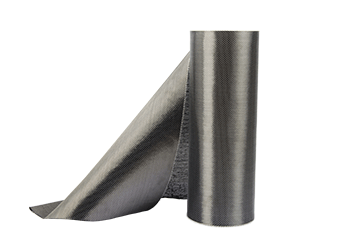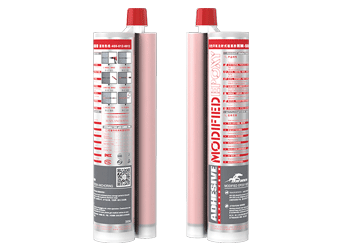Solutions
Horse Construction offers full range of structural strengthening materials with technical supports, documentation supports, products supports, project supports.
Carbon fiber strengthening
Project Overview
In the belt transportation corridor of Jiahe Coal Mine, in recent years, due to the harsh environment and environment of the structure, the reinforced concrete structure and materials have deteriorated, and the foundation has unevenly settled, causing the structure to tilt. The shearing dislocation of the joints, the carbonization of concrete and the reduction of strength seriously affect the safety and production of coal mines.
The specific damage sites include belt corridors and supporting trusses between silos. The silo was severely inclined, severe shear damage occurred at the connecting part of the belt corridor and the silo, and the wall, the silo wall, and the connecting beam were obviously broken. The concrete of the lower chord node of the belt corridor supporting bridge has severe cracking, broken, and large-area shedding, accompanied by exposed steel bars and corrosion. The belt corridor supporting truss near the coal loading yard: the concrete on the surface of the chord beam is more severely weathered, the concrete under the beam is cracked, and the cracks are generally distributed along the steel bar. Part of the lower chord concrete has all fallen off.
In view of the structural safety problems exposed by the belt gallery truss of the coal washing plant of Jiahe Coal Mine, carbon fiber composite materials were used to reinforce the truss without affecting mine production.
Design principles and methods of carbon fiber strengthening
Design principles of carbon fiber strengthening :
①In order to give full play to the high-strength characteristics of carbon fiber, the actual concrete strength grade of the reinforced concrete structure and members should not be lower than C15 during bending strengthening and shear strengthening. When using sealed and pasted carbon fiber sheets to reinforce concrete columns, the concrete strength grade should not be lower than C10.
② When using bonded carbon fiber sheets to reinforce the concrete structure, the ultimate state design method based on probability theory shall be adopted in accordance with the current relevant national standards to carry out the ultimate state calculation of the bearing capacity and the check calculation of the normal service limit state.
③When the shear strength of concrete is low, the number of layers of carbon fiber cloth should be increased. Considering the peeling damage between the carbon fiber cloth and the surface of the reinforced member, the number of adhesive layers of the same section of the carbon fiber cloth under stress should not be more than 3.
④ When using pasted carbon fiber sheets to reinforce the structure or components, the possible impact on other components or other properties of the components in the structure should be considered after the strengthening.
⑤ For carbon fiber sheets, the ultimate tensile strength of not less than 95% guarantee rate provided by the manufacturer shall be taken as the standard value of tensile strength. The ultimate tensile strain of carbon fiber sheet should be taken as the standard value of tensile strength divided by the modulus of elasticity. The ultimate tensile strain of carbon fiber sheet should be taken as the standard value of tensile strength divided by the modulus of elasticity.
⑥The overlap length of the carbon fiber cloth along the fiber bearing direction shall not be less than 100mm. When multiple or multiple layers of carbon fiber cloth are used for strengthening, the overlapping positions of each or each layer of carbon fiber cloth should be staggered.
⑦When pasting the concrete structure with corners, the corners of the concrete structure should be polished to round corners to avoid stress concentration of the fiber cloth at the corners.
⑧There is a problem of efficiency in the application of carbon fiber cloth. For the same amount of carbon fiber cloth, the strengthening effect of pasting with equal strips is slightly better than that of whole strips.
⑨In order to ensure that the carbon fiber sheet can work reliably with the concrete, additional anchoring measures should be taken when necessary.
Methods of carbon fiber strengthening
①Paste carbon fiber along the main axis of the component to improve the bending and tension resistance of the component;
②The carbon fiber is pasted along the vertical direction of the main axis of the component, and the shear force is shared by the carbon fiber and the stirrup to improve the shear resistance of the component;
③ Paste carbon fiber cloth along the vertical direction of the main axis of the component to improve the ductility of the reinforced part and improve its seismic performance. At present, the most widely used carbon fiber at home and abroad is the use of carbon fiber for structural strengthening, that is, the comprehensive use of these three strengthening methods to achieve the purpose of strengthening.
Truss strengthening scheme
The Jiahe belt corridor truss was tested and reliability evaluated according to the strengthening design requirements. The results showed that the bearing capacity of multiple members of the truss did not meet the original design requirements. The diagonal struts and lower chord tie rods between the first section of the truss end were evaluated. It is Class C, and its bearing capacity cannot meet the current specifications. In addition, there are also many cracks at the bottom chord node of the truss end due to the lack of stirrups in the direction of the vertical end web and secondary stress. Therefore, considering safety, applicability, and durability, the truss needs to be reinforced, and the following strengthening measures should be adopted:
1 is truss unloading: replace the damaged concrete roof panels and clay solid brick maintenance walls with light steel roofs and maintenance walls to reduce the load on the trusses and improve the safety of the trusses through unloading.
The second is to stick carbon fiber strengthening: including 3 parts of the web, the middle node and the lower chord.
Construction points
Although the construction of pasting carbon fiber has high work efficiency and convenient operation, due to many specific conditions, in addition to the process requirements, the following points should be noted during construction:
(1) The unloading of the belt gallery is considered in the design. Therefore, the carbon fiber must be pasted after replacing the light steel structure.
(2) The concrete base surface must be carefully polished to remove the deteriorated parts of the surface until the complete concrete structure layer is exposed.
(3) The corners of the truss members should be polished into a circular arc with R>20mm, and smoothed with leveling materials to prevent stress concentration generated by the carbon fiber at the corners.
(4) In order to ensure the effect of pasting carbon fiber, the temperature of the pasting part should be above 5°C during the construction process.
(5) For carbon fibers with a length> 3 m, the form of pasting should be used in sections, and the overlap mark should be made to ensure that the overlap length between the carbon fibers is> 150 mm. When pasting, a roller should be used to repeatedly roll along the fiber direction and extrude. The air bubbles fully impregnate the carbon fiber with the adhesive resin.
Conclusion
The use of carbon fiber strengthening for the belt gallery truss of Jiahe Coal Mine is the first time in Xuzhou Mining Bureau. The following characteristics of carbon fiber strengthening are reflected in this strengthening project:
① Wide application. It can not only be used to improve the bearing capacity of the structure, but also can be used for seismic strengthening, improve the ductility of the structure, and there are many strengthening methods, and different strengthening methods can be used to achieve the final goal according to the needs;
②Convenient construction and high work efficiency. Construction does not require large machinery or wet work. The finished carbon fiber is in the form of coiled fabric, which can be cut at will, the construction is convenient and flexible, and the effective bonding surface can reach 100%;
③Good construction performance. Many parts where carbon fiber is pasted, such as upper and lower chord nodes, are complex in size and irregular in shape. Carbon fiber materials are light and thin, easy to operate, and just solve these problems. Compared with bonded steel, its construction quality is easier to guarantee.
At the same time, because it does not increase its own weight, and has good resistance to acid, alkali, salt and atmospheric corrosion, the application of carbon fiber strengthening technology in the field of building strengthening has broad development prospects.
You can find anything here you are in need of, have a trust trying on these products, you will find the big difference after that.

High strength, unidirectional carbon fiber fabric pre-saturated to form a carbon fiber reinforced polymer (CFRP) fabric used to strengthen structural concrete elements.

High strength, unidirectional carbon fiber sheet pre-saturated to form a carbon fiber reinforced polymer (CFRP) sheet used to strengthen structural concrete elements.

Two-components modified epoxy resin adhesive, with high quality plastic tube, double cartridge package for anchoring